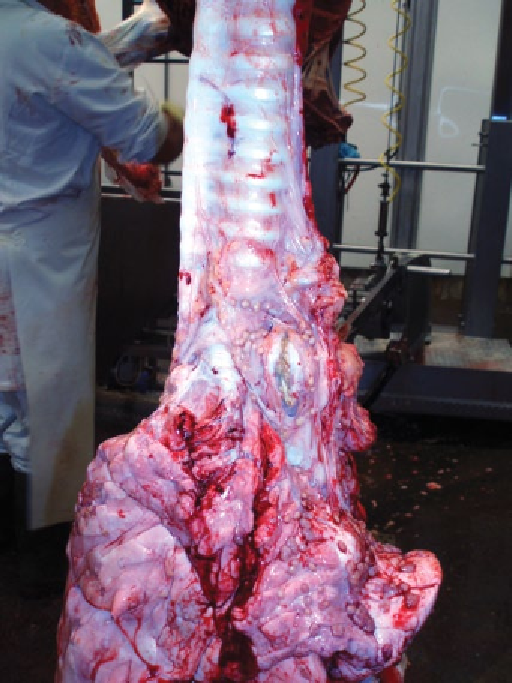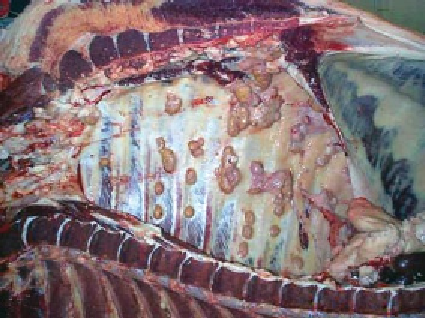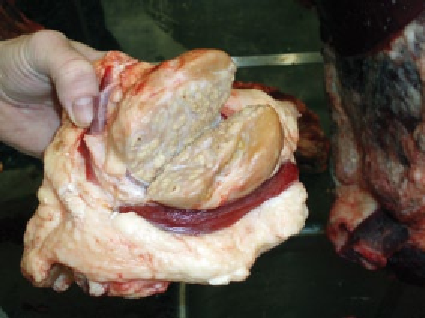Agriculture Reference
In-Depth Information
(a)
(b)
(c)
Figure 9.13
Lesions of bovine TB (Courtesy of the Meat Inspection Team, Dunbia, Dungannon, N. Ireland).
Common post-mortem findings
Inspectors often disagree about how best to interprete
common post-mortem findings. Decisions require the
detailed examination of suspect animals including all
parts of the carcase and viscera, even organs and parts
whose position is remote from what is considered to be
the primary lesion. This will determine whether the
lesions are
localised
or
generalised
and consequently the
extent of condemnation necessary.
Similarly, the nature of the specific lesion, along with
the entire carcase and viscera, must be considered to
decide whether the condition is
acute
or
chronic
.
As a general rule, the
acute
and
generalised
condition
will require the
total condemnation
of the carcase and the
viscera, while the
chronic
and
localised
may require only
local condemnation
or in some cases
no condemnation
at
all. This emphasises the importance of correlation of
inspection procedures and the importance of ensuring that
viscera follow the carcase on to the detained rail since there
may be significant lesions in both. If we consider some spe-
cific lesions, some general guidance can be suggested.
Abscesses
Abscesses are one of the most common lesions routinely
encountered in pigs. A study carried out to map the posi-
tion of abscesses in 75 130 pigs produced the following
findings (Huey, 1996):
1
2.87% of pigs examined had an abscess at one site.
2
The dominant bacterium isolated from all abscesses
was
Actinomyces pyogenes
. It has been argued (Berends
et al.
, 1993) that since this bacterium poses little threat
to the consumer's physical health, only local condem-
nation is ever justified. However, any indication of a
bacteraemia or pyaemia can do little for the quality of
the meat and nothing to reassure the public as to the
safety of their food. As Norval stated in 1966, 'there
can be nothing more disgusting to the butcher or
housewife than to slice through an abscess when
preparing meat.
3
0.26% of pigs slaughtered possessed abscesses at more
than one site.
4
Of these, 80% had the tail as one of the sites, indicating
the importance of tail biting in the aetiology.



